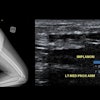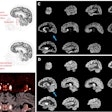
NEW YORK (Reuters Health), Aug 15 - Twenty-three percent of breast cancer patients with an involved sentinel lymph node have a sentinel node that contains micrometastases, according to a report in the August 1st issue of Cancer. Sixteen percent of patients have a sentinel node containing submicrometastases.
The presence of micrometastases should cause clinicians to consider performing an axillary lymph node dissection (ALND), the researchers advise, whereas this procedure should be avoided if only submicrometastases are present.
The frequency of micrometastases and submicrometastases in sentinel nodes as well as the prognostic significance have been unclear, lead author Dr. Maartje C. van Rijk and colleagues, from the Netherlands Cancer Institute in Amsterdam, note. To investigate, the researchers analyzed data from 2,150 breast cancer patients who underwent sentinel lymph node biopsy between 1999 and 2004.
A total of 649 (30%) patients had a breast cancer-involved sentinel node. Of these patients, 148 (23%) had micrometastases, defined as disease greater than 0.2 mm, but no greater than 2 mm. Submicrometastases, defined as disease no greater than 0.2 mm, were noted in 105 (16%).
Overall, 106 of the 148 patients with micrometastases underwent ALND, which identified additional metastases in 20 patients. In 16 of the 20 patients, macrometastatic disease was seen and led to an upstaging of their breast cancer. In the other four patients, by contrast, only more micrometastases were noted.
Just seven of the 106 ALND-treated patients with micrometastatic disease received additional systemic therapy based on the ALND findings.
ALND was performed in 54 of the 105 patients with submicrometastases. Two of these patients had additional macrometastases and were upstaged, while two had additional micrometastases. In no cases did the ALND results change treatment.
In light of the current findings, "pathological work-up should focus on the detection of macro- and micrometastases, and not on the detection of submicrometastases and isolated tumor cells. Therefore, routine evaluation of sentinel nodes by immunohistochemical staining is not necessary," the authors conclude.
Last Updated: 2006-08-15 9:55:28 -0400 (Reuters Health)
Cancer 2006;107:467-471.
Related Reading
SLN procedure in pregnant breast cancer patients leads to negligible fetal dose, August 14, 2006
Copyright © 2006 Reuters Limited. All rights reserved. Republication or redistribution of Reuters content, including by framing or similar means, is expressly prohibited without the prior written consent of Reuters. Reuters shall not be liable for any errors or delays in the content, or for any actions taken in reliance thereon. Reuters and the Reuters sphere logo are registered trademarks and trademarks of the Reuters group of companies around the world.
















